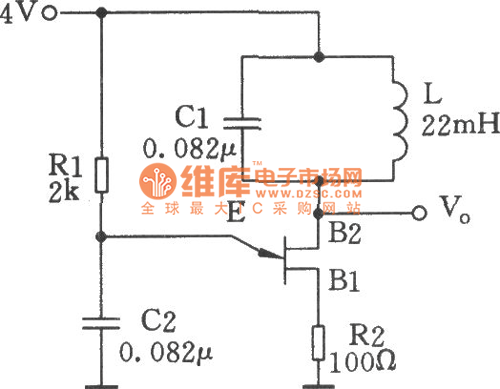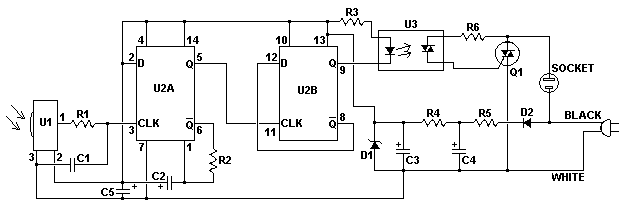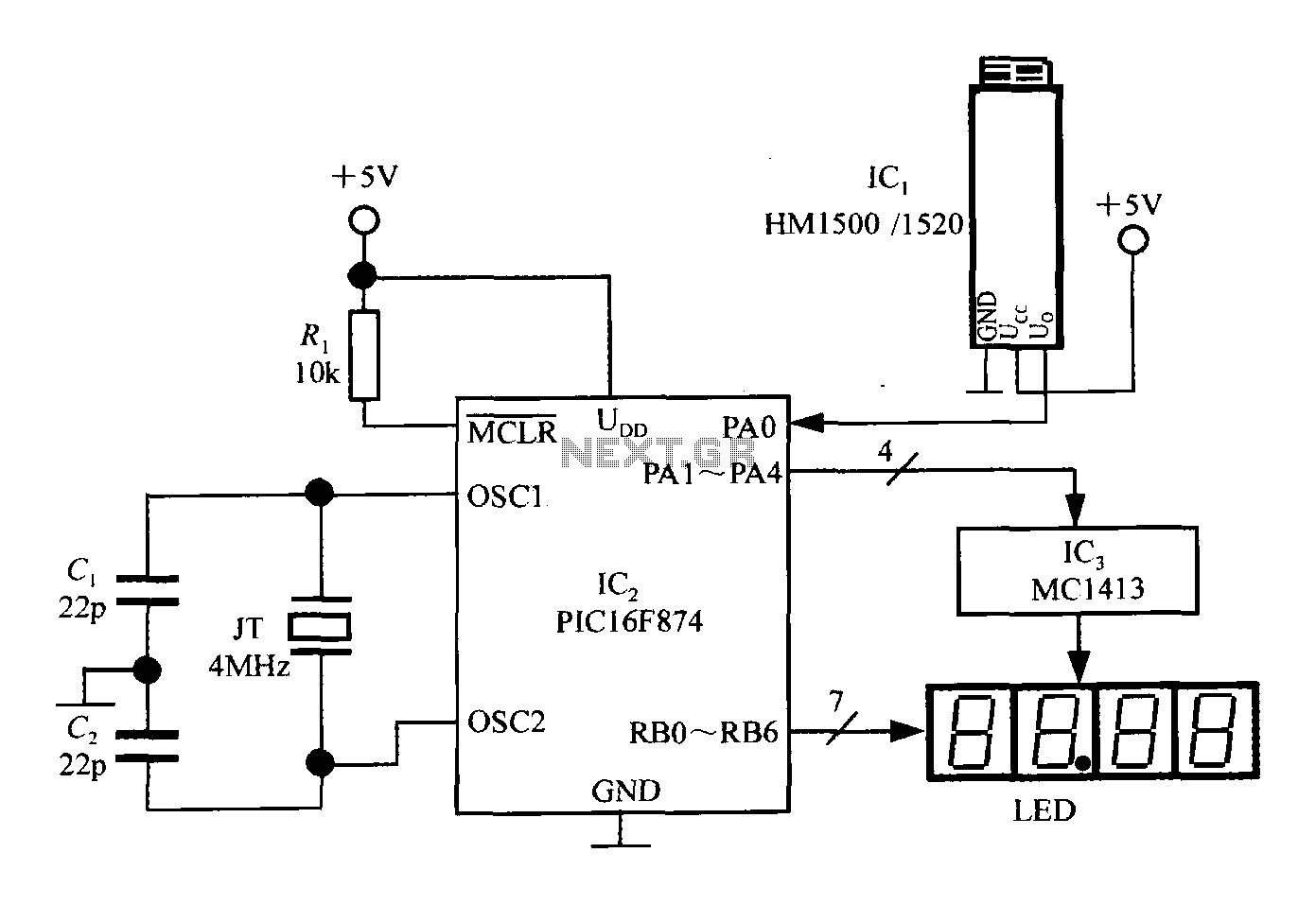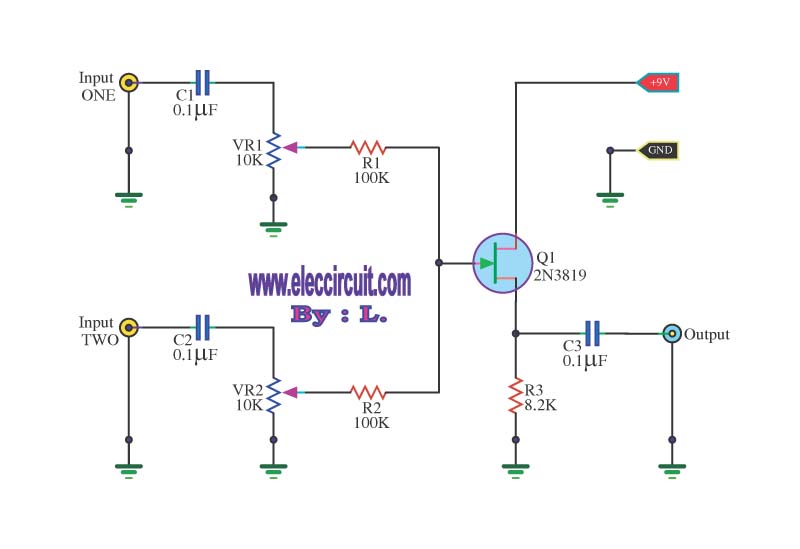
Single-junction transistor sine wave oscillator circuit

The single-junction transistor is commonly utilized in sawtooth and pulse generators, and it can also be configured to create a basic sine wave generation circuit. As an oscillator circuit composed of discrete components, it requires a minimal number of parts. As illustrated, in comparison to a simple single-junction tube remittent oscillator circuit, this design incorporates an LC tuned circuit at the second base. The excitation from the single-junction tube current pulse causes the tuned circuit to generate sine wave oscillations. The tuned resistor R1 is responsible for regulating the magnitude of the current pulse, which subsequently produces the sine wave at B2.
The single-junction transistor serves as a fundamental building block in various oscillator circuits due to its simplicity and efficiency. In the context of a sawtooth generator, the transistor can switch rapidly, creating sharp transitions that are ideal for generating sawtooth waveforms. The addition of an LC tuned circuit enhances the functionality of the oscillator by allowing it to produce sine wave oscillations.
In this configuration, the LC circuit, which consists of an inductor (L) and a capacitor (C), is tuned to resonate at a specific frequency determined by the values of L and C. When the single-junction transistor is excited by a current pulse, it drives the LC circuit into oscillation. The resonant frequency of the LC circuit can be calculated using the formula:
\[ f = \frac{1}{2\pi\sqrt{LC}} \]
where \( f \) is the frequency in hertz, \( L \) is the inductance in henries, and \( C \) is the capacitance in farads.
The tuned resistor R1 plays a critical role in controlling the amplitude of the oscillations. By adjusting the resistance value, the current flowing through the circuit can be modified, which in turn affects the output sine wave's amplitude at point B2. This feature allows for fine-tuning of the oscillator's output, making it versatile for various applications in signal processing and waveform generation.
Overall, the design's minimal component count combined with the effectiveness of the single-junction transistor and LC tuned circuit makes it a valuable solution for generating precise waveforms in electronic applications.The single-junction transistor is always used in the sawtooth generator and pulse generator, and it also can form the simple sine wave generation circuit. As an oscillator circuit of the discrete component, it uses fewest components. As the figure shown, compared with the simple single-junction tube remittent oscillator circuit, this circuit adds
a LC tuned circuit at the second base. By the excitation of the single-junction tube current pulse, the tuned circuit generates sine wave oscillation. Tuned resistor R1 can control the size of current pulse and have the sine wave at B2. 🔗 External reference
The single-junction transistor serves as a fundamental building block in various oscillator circuits due to its simplicity and efficiency. In the context of a sawtooth generator, the transistor can switch rapidly, creating sharp transitions that are ideal for generating sawtooth waveforms. The addition of an LC tuned circuit enhances the functionality of the oscillator by allowing it to produce sine wave oscillations.
In this configuration, the LC circuit, which consists of an inductor (L) and a capacitor (C), is tuned to resonate at a specific frequency determined by the values of L and C. When the single-junction transistor is excited by a current pulse, it drives the LC circuit into oscillation. The resonant frequency of the LC circuit can be calculated using the formula:
\[ f = \frac{1}{2\pi\sqrt{LC}} \]
where \( f \) is the frequency in hertz, \( L \) is the inductance in henries, and \( C \) is the capacitance in farads.
The tuned resistor R1 plays a critical role in controlling the amplitude of the oscillations. By adjusting the resistance value, the current flowing through the circuit can be modified, which in turn affects the output sine wave's amplitude at point B2. This feature allows for fine-tuning of the oscillator's output, making it versatile for various applications in signal processing and waveform generation.
Overall, the design's minimal component count combined with the effectiveness of the single-junction transistor and LC tuned circuit makes it a valuable solution for generating precise waveforms in electronic applications.The single-junction transistor is always used in the sawtooth generator and pulse generator, and it also can form the simple sine wave generation circuit. As an oscillator circuit of the discrete component, it uses fewest components. As the figure shown, compared with the simple single-junction tube remittent oscillator circuit, this circuit adds
a LC tuned circuit at the second base. By the excitation of the single-junction tube current pulse, the tuned circuit generates sine wave oscillation. Tuned resistor R1 can control the size of current pulse and have the sine wave at B2. 🔗 External reference





